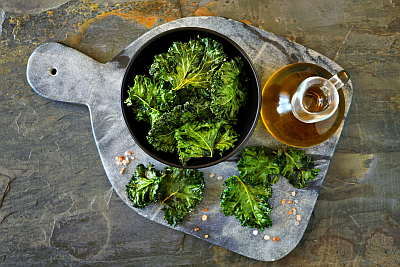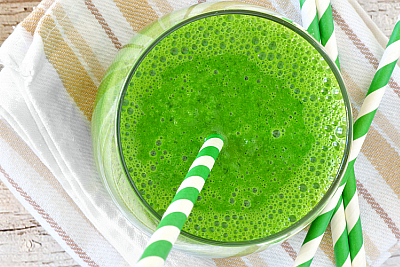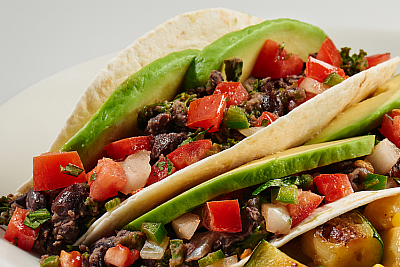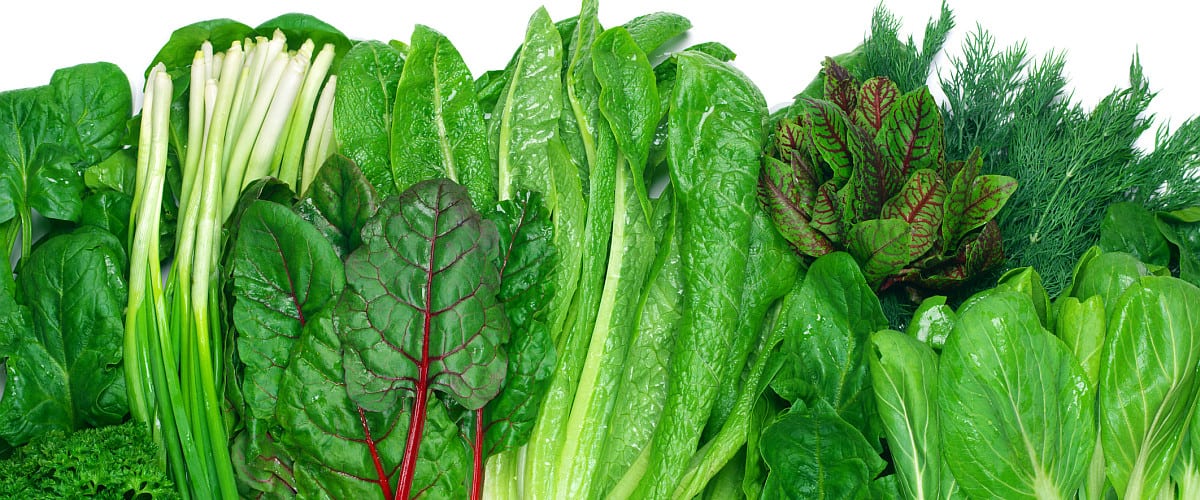
Chef Andrew Bergholtz
Whether you prefer them cooked or raw, tossed, or topped—spring is one of the best times of year for fresh and healthy greens.
We interviewed Aramark Chef Andrew Bergholtz to learn about new ways to use the greens that you’ve been eating for years and to try new greens that you may not have tried before.
Q: When you think of spring greens and creating dishes this season, what are some of your favorite foods that come to mind?
Arugula, kale, spinach, and watercress are some of the greens I love to use in the kitchen. There are so many different nutrients and flavors from these greens. They really give us chefs tons of ways to highlight them.

Recipe: Kale Chips
Q: Why do you love working with spring greens?
As chefs, we’re always looking for creative ways to give our guests a memorable dining experience. So instead of just using greens in salads, I try and utilize them in other ways—whether it’s a fresh pesto made with arugula, baked kale “chips,” or braised dandelion greens.
This is a good way to transition people that might be somewhat hesitant to eat greens, to enjoy the delicious flavor they have to offer as well as the nutritional benefits.
Q: How do you use greens to feed your potential?
Since being a chef requires being on your feet a good portion of the day and I play some recreational sports, it’s important for me to maintain my energy and a healthy diet with greens helps me do that.
Plus, I like to think the whole Popeye and spinach thing actually works!
Q: What are some different leafy greens and the best way to enjoy them?
In my opinion, mustard greens are an underutilized leafy green. They have a pungent flavor but taming the bitterness can make them extremely flavorful.
You will see in most southern style cuisine that mustard greens can be treated just like collard greens. Some of the best ways to enjoy mustard greens are simply sautéing or lightly blanching them with salt (a little tamari, bacon, or prosciutto will also work), and oil (extra-virgin, sesame oil, or nut oils).
Of all the super healthy greens, kale is the king. Its rich flavor, chewy texture, and peppery kick offers a great taste with robust ingredients like crushed red pepper, soy sauce, a strong cheese, or sherry vinegar. Kale is also very forgiving: it’s easy to cook and almost impossible to overcook.
Raw spinach has a milder taste. If cooking spinach, opt for steaming, sauteing, or microwaving it rather than boiling to preserve the nutrients.

Recipe: Tropical Smoothie
Q: Any ideas for someone who doesn’t love eating greens?
As someone who was hesitant to eat greens in the past, my advice is to keep trying them! There are so many resources out there to help spark ideas and creativity from recipe books to cooking shows and food blogs.
We as chefs always want to be creative. How can I take something as simple as spinach and make it more interesting?
Everyone knows you can use greens in a salad, but what about other uses, such as pesto, smoothies, and purees? It’s these techniques that I think can really get people to eat healthier.
Q: Have you ever cooked for someone who thought they hated greens, but then learned to love them because they discovered how good they can be?
Nowadays, we are starting to realize that greens are not only healthy for you, but they impart unique flavors, too.
All of us are over mushy peas, canned asparagus, and frozen spinach!
We are incorporating healthy greens into main dishes and not just serving them as a side. I myself can vouch for that. I’m constantly looking for ways to get these greens in my diet.

Recipe: Black Bean and Kale Tacos
Q: What other tips do you have about greens?
- Always try to use fresh ingredients when cooking with greens for the best flavor.
- When cooking with greens, especially the heartier leafy greens (kale, mustard greens, collards, etc.) use a good vinegar (sherry, red wine, or balsamic) and splash a few drops on the greens just before they’re finished cooking. This brings out the brightness of the greens and can cut through some of the bitterness.
- Always rinse your greens before use. A lot of produce carries sediment and dirt so make sure you rinse the greens really well. A good trick is to fill your sink or bowl with cold water, dip either whole or cut leaves into the water, and any residual dirt will settle at the bottom of the sink or bowl giving you clean greens.
Since everyone’s health history and nutritional needs are so different, please make sure that you talk with your doctor and a registered dietitian to get advice about the diet and exercise plan that‘s right for you.
Note: Since everyone’s health history and nutritional needs are so different, please make sure that you talk with your doctor and a registered dietitian to get advice about the diet and exercise plan that‘s right for you.


